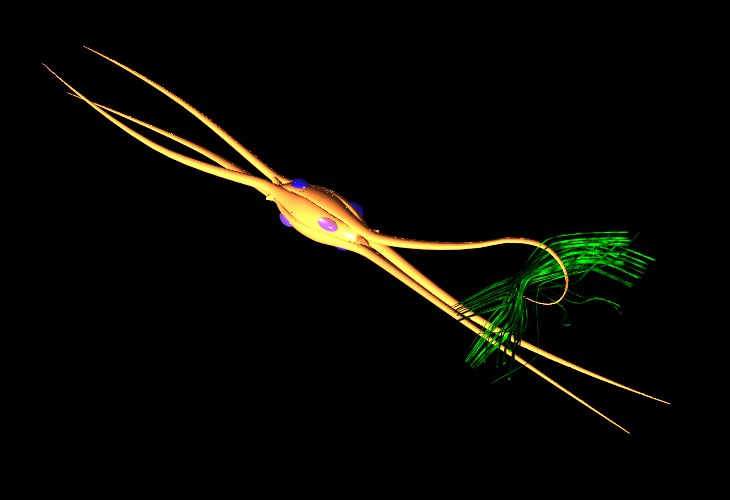

Like Saturn's, the rings are mostly chunks of water ice. For life, available energy inputs are low, and that limited amount of energy has to be used to process a lot of water ice to extract other nutrients. Thus the rings can support only very slow growing kelp-like plants. Still, in the microgravity environment these grow into "beds" hundreds of kilometers long before being torn apart by tidal or magnetic forces, each fragment serving as the nucleus of a new bed.
These "kelp beds" do support a sparse population of creatures vaguely resembling squid, with an elongated globular body and with a cluster of grasping tentacles at either end. Though the creature can propel itself short distances by ejecting a jet of water vapor, it normally prefers to use its tentacles to anchor to or move along the plant strands, since both its delta-v and navigational abilities are limited.
Though much of the ring system remains to be explored in detail, the low energy and nutrient density makes it unlikely that more complex life forms will be discovered.
--Edited from the notes of H. Landon Falls, binary system observer.